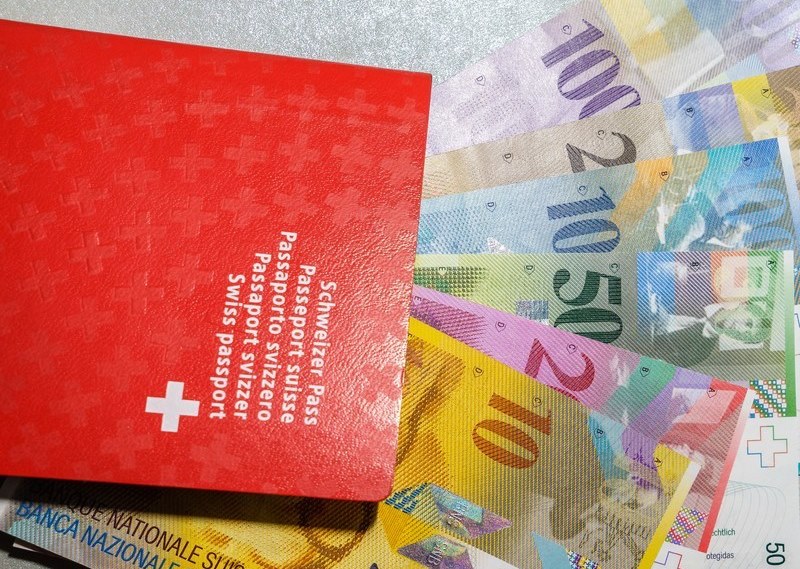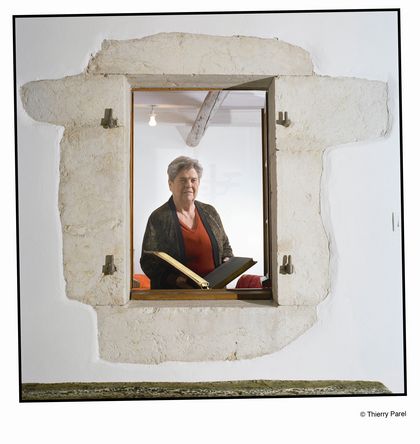“My name is like a spell, as much in Russia as in the United States,” chuckles Tatiana Fabergé, great granddaughter of the Tsars’ jeweller, Carl Fabergé. “People sometimes look at me like a statue stepping off its pedestal.” She has decided to capitalize on this coruscating evocation to launch her own label Imperial Collection by Tatiana Fabergé, which also specializes in interior design for luxury villas.
For nearly 150 years, the name Fabergé has been turning heads and moving millions. Some beat Tatiana to its use: in the 1920s, the trademark name Fabergé was registered in the US by Samuel Rubin, a friend of the businessman Armand Hammer, who had just returned from Russia with numerous jewels made by Carl Fabergé. The name now belongs to the Palling Hurst firm, and is, therefore, no longer owned by the family Fabergé, who had to flee Russia following the Bolshevik Revolution, with more than trademarks on their minds. “Seeing as I can’t have Fabergé, I’ll go for Tatiana Fabergé,” said the descendant, somewhat resigned. “In any case, I’ve long stopped fretting about these things.” The phenomenal sums that the most trifling object labelled Fabergé can fetch has, indeed, drawn much envy and fraud. “Counterfeits trying to fake Fabergé eggs for huge profits are legion,” said Tatiana Fabergé.
“People turn up with the wackiest stories of eggs left in attics by their grandmothers – dubious at best.” Since publishing The Faberge Imperial Easter Eggs in 1997, which inventories the 52 imperial eggs, she regularly adjudicates on the matter, something she enjoys immensely. She is an expert in the elaborate punch-holes her great grandfather used to serialize his artefacts, a system that continues to stump fraudsters.
But, in spite of this, “it’s not always a breeze to pinpoint genuines from fakes,” she pointed out, “all the more so given the sums at stake. Some experts cannot resist the temptation to call a fake the real thing.” Along with Valentin Skurlov, specialist in Russian jewellery history and co-author of the book, Tatiana Fabergé often rains on parades: “Clearly, when we say an egg bought for millions is a fake, we aren’t making any friends.” But it would be a mistake to think her prestigious name has guaranteed Taitana Fabergé a gilded life of leisure. Fleeing the revolution with utmost haste, her ancestor was unable to take much along. “He was sick and had lost it all. He didn’t want to go on living like that and died in Lausanne three years later,” recounts his great granddaughter, who regrets never having met him.
Without a dime, her family settled in Versoix to begin a new life. They opened a hostel and raised chickens.
“There’s a certain logic to the progression from Fabergé eggs to chicken eggs,” she said, smiling.
Owner of a few jewels made by the famous jeweller, she, herself, owns no eggs. “It was a task he devoted to the tsars, not to his family,” she explains.
Living in a precarious financial situation, the Fabergé family rarely brings up their glorious past in Russia.
Tatiana, nonetheless, grew up in a Russian atmosphere since her father married a Russian, herself a refugee in Geneva after the revolution. So Tatiana spoke Russian before learning French in school.
And she had to work to earn a living. Using her multilingual skills – she also speaks German, English and Italian – she worked as a secretary in various international organizations in Geneva and abroad, before taking on a long-term post at the CERN (European Center of Nuclear Research).
Only since her retirement, which more or less coincided with perestroika, did she begin to dig back into her family’s past and to promote the cultural hers itage of her eminent ancestor. She gives talks and is wanted at cultural events – In other words, she is finally taking full advantage of her name.
The Fabergé Imperial Easter Eggs is today out of print. It is the fruit of much toil, since it took four years to track down the 52 imperial eggs spread throughout numerous private collections after their requisition by the Bolsheviks during the revolution.
Collectors were not always very responsive to queries. Fortunately, Tatiana Fabergé was able to count on her notoriety, along with the support of her two collaborators, Valentin Skurlov and Lynette Proler, an American antiques dealer.
For those taken by the tsars’ jeweller, the book sheds light on certain little-known eggs and their histories, such as the last series of the collection, which were more sober in design due to the costs of the first world war that Russia was involved in. One such egg is the Red Cross egg, created in 1915 and bearing a red cross on a white background containing the portraits of all the Romanov women, dressed up as nurses. This paid tribute to the women of the Romanov family, who had set up a hospital in their palace to attend to the growing number of wounded Russians.
There’s also the military egg, made out of iron and set on four bullets, manufactured by one of the tsar’s arms factories in 1916. The war brought on tough times; precious materials were scarce and the Romanovs had to put the breaks on their luxurious life so as not to incite the people to rebel.
In the book, one can also enjoy (re)discovering the more pompous eggs that made the master’s reputation.
Among them are Tatiana Fabergé’s favourites: the clover egg, for its delicate brushwork, and the mosaic egg, studded with multicoloured gems. Passionate, Tatiana Fabergé has a tale to tell for each imperial egg. The winter egg, for example, done up with over 4,000 diamonds, made a relative of the Emir of Qatar do a double-take, and then purchase the piece in 2002 for US$ 9.6 million. Chafed by this transaction, the Emir cut all funds to the dilettante. “I don’t know what happened to the egg,” said Tatiana Fabergé. “I just hope it’s safe.” Fired up by her family history, even if she admits it “sometimes gets a bit too much,” Tatiana Fabergé is currently at work on a new book, still in collaboration with Valentin Skurlov and journalist Eric-Alain Kohler.
Fabergé the true legends will be “a sort Fabergé bible” according to its author. It should be out soon.
Fabergé, the tsars’ jeweller Born in St Petersburg in 1846, Carl Gustavovitch Fabergé was the son of a French Huguenot, whose family had fled Picardy after the Edict of Nantes was rescinded.
His father, Gustav, founded the House of Fabergé, a jewellery firm in 1842. Carl enlarged it in 1872, following training as a goldsmith in Germany, France, Britain and Italy.
In 1885, he was named court jeweller by Tsar Alexandre III, who commissioned one egg a year to offer his wife for Easter, Russia’s most important celebration. Toward the end of 1894, Nicholas II, the last of the tsars to reign, came to the throne. He, in turn, ordered two eggs to be made a year, one for his mother and one for his wife, until February 1917, when the revolution forced him to abdicate. In all, 52 imperial eggs (two of which could not be given to the tsar in 1917) were produced by the House of Fabergé. Dispersed throughout the world, eight still remain at large today. If his eggs made him most famous, Carl Fabergé was also a prolific jeweller. His firm counted more than 600 employees, and he had subsidiaries in Moscow, Kiev, Odessa and London. From 1882 to 1917, no less than 200,000 artefacts were created.
The 1917 revolution dealt a fatal blow to the jeweller.
First exiled in Riga, from where he hoped to return to the imperial city once the situation calmed down, he was then forced to flee even further. Old, ill and completely ruined, he died in Lausanne in 1920.
He was the father of four sons: Eugene, Alexandre, Nicolas and Agathon, Tatiana’s grandfather.
From Carl to Tatiana Fabergé, a brief chronology 1846: Carl Fabergé is born in St Petersburg.
1876: Agathon Fabergé, son to Carl and future grandfather to Tatiana is born.
1904: Theodore Fabergé, son to Agathon and future father to Tatiana is born.
1917: Russian revolution.
1918: The Fabergés leave Russia.
1920: Carl Fabergé dies in Lausanne.
A part of the family moves to Versoix.
1930: Tatiana Fabergé is born in Geneva.
1992: The History of the House of Fabergé is published in St. Petersburg, based on the memoirs of François Birbaum, head designer for Fabergé.
1997: Christies’ Publication House releases The Fabergé Imperial Eastern Eggs, by Tatiana Fabergé, Valentin Skurlov and Lynette Proler.













